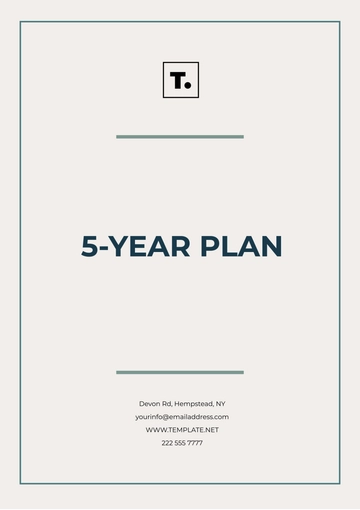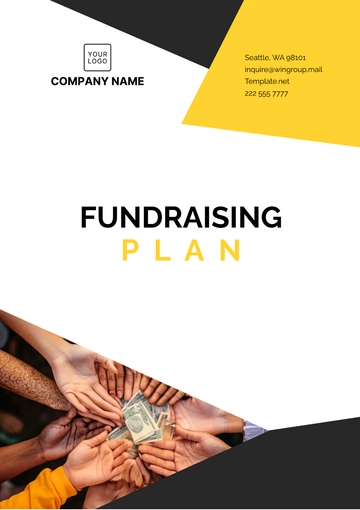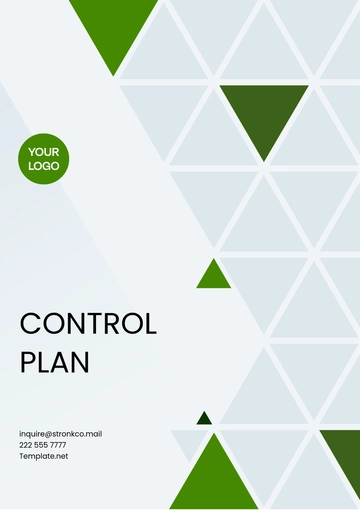Free Fashion Collection Plan

I. Executive Summary
The upcoming fashion collection by [Your Company Name] is designed to captivate the modern, fashion-forward consumer who values both style and sustainability. Targeting contemporary fashion enthusiasts, this collection will combine cutting-edge designs with environmentally responsible practices. Each garment will be crafted using eco-friendly materials, with a focus on reducing carbon footprints and promoting ethical labor practices throughout the production process. The collection will emphasize inclusivity, offering a wide range of sizes and styles to ensure that every consumer feels represented and catered to. By integrating sustainability into the design, production, and distribution phases, [Your Company Name] aims to set a new standard for fashion that is both stylish and socially responsible.
This plan outlines the comprehensive approach that [Your Company Name] will take to bring the collection to market. It includes an in-depth market analysis, which highlights current consumer trends toward sustainable fashion and inclusivity. The design strategy focuses on timeless aesthetics, quality craftsmanship, and eco-conscious choices. Production will involve partnerships with suppliers who share [Your Company Name]'s commitment to sustainability, while the marketing strategy will leverage social media platforms and influencers to reach a broad audience. Financial projections show promising growth, with anticipated strong demand from eco-conscious and socially aware consumers, ensuring the collection’s success in a competitive market.
II. Market Analysis
A. Industry Overview
The U.S. fashion industry is projected to experience steady growth, with expectations of a compound annual growth rate (CAGR) of 5.8% over the next five years. This growth is driven by a significant increase in consumer demand for sustainable and ethically produced clothing. The shift towards sustainability is reshaping the fashion landscape, with an increasing number of consumers prioritizing environmental responsibility and ethical production when making purchasing decisions. As concerns over the environmental impact of fast fashion rise, eco-conscious fashion brands are gaining market share. The trend toward sustainable fashion is moving beyond niche markets and becoming a mainstream expectation. This presents a valuable opportunity for [Your Company Name] to connect with and capture the attention of eco-conscious consumers seeking products that align with their values of sustainability, ethical labor practices, and transparency.
B. Target Audience
[Your Company Name]'s primary target audience consists of millennials and Generation Z, two groups that are increasingly prioritizing sustainability and ethical production in their fashion choices. Millennials (aged 25-40) and Gen Z (aged 18-24) are particularly drawn to brands that offer products aligned with their values of social responsibility and environmental consciousness. These generations are known for their preference for versatile, long-lasting fashion that combines style with sustainability. Research has shown that these consumers are more likely to choose brands that adopt ethical manufacturing practices, use sustainable materials, and provide transparency throughout their supply chain. Fashion is an essential form of self-expression for this audience, and they expect their clothing choices to reflect not only their personal style but also their broader commitment to positive environmental and social change. By offering a collection that merges aesthetic appeal with sustainable and ethical practices, [Your Company Name] will meet the evolving demands of this influential consumer segment.
III. Design Strategy
A. Inspiration and Theme
he design inspiration for [Your Company Name]'s upcoming collection draws from the natural world and the vibrant energy of urban landscapes, resulting in a harmonious blend of nature and city life. The theme, "Urban Naturals," reflects the duality of modern living, where the fast-paced energy of the city meets the serene beauty of the natural environment. Earthy tones, such as rich greens, deep browns, soft neutrals, and muted blues, will dominate the palette, evoking a connection to the earth and its landscapes. Modern silhouettes and clean lines will capture the essence of urban sophistication, while organic fabrics and sustainable materials ensure the designs stay grounded in the theme’s eco-conscious foundation. This fusion of the organic and the urban is designed to resonate with fashion-forward individuals who appreciate the balance between natural beauty and contemporary style. Through this collection, [Your Company Name] aims to create pieces that not only look stylish but also tell a story of environmental mindfulness and modern elegance.
B. Product Range
The collection will feature a carefully curated selection of garments designed to cater to a variety of occasions, combining versatility, style, and sustainability. Key pieces include:
Dresses: A range of casual and evening dresses designed for both comfort and elegance. These dresses will feature minimalist yet sophisticated designs, using eco-friendly fabrics like organic cotton, Tencel, and recycled polyester. Whether for daywear or an evening event, these dresses will be the epitome of versatile style.
Tops: Versatile blouses and tees that can be dressed up or down. These will be crafted from sustainable fabrics, offering a comfortable fit without sacrificing style. The collection will include structured blouses with subtle details, as well as relaxed-fit tees ideal for layering, all featuring eco-friendly dyes and finishes.
Bottoms: Tailored pants and skirts that provide a sleek, modern look while prioritizing comfort and sustainability. With attention to detail in fit and fabric choice, these pieces will offer both professional and casual wear options, made with durable, low-impact materials like organic cotton twill and recycled wool blends.
Outerwear: Jackets and coats designed to withstand both urban environments and cooler weather, while keeping sustainability at the forefront. Featuring stylish cuts such as tailored blazers, trench coats, and oversized jackets, each piece will be constructed with recycled fibers or organic wool, ensuring warmth without compromising environmental integrity.
Accessories: A selection of sustainable accessories, including bags and jewelry, will complement the collection. The bags will be crafted from upcycled materials, while the jewelry will feature ethically sourced metals and gemstones. These accessories will serve as a perfect finishing touch to an outfit, adding a touch of refinement and eco-conscious luxury.
Each piece in the collection will reflect [Your Company Name]'s commitment to quality, sustainability, and timeless design, ensuring that customers can enjoy fashion that aligns with both their aesthetic and ethical values.
IV. Production Plan
A. Materials and Sustainability
At [Your Company Name], sustainability is at the core of our production process, starting with the selection of materials. We are committed to sourcing eco-friendly fabrics that have minimal environmental impact while maintaining high standards of quality. Key materials for this collection include organic cotton, which is grown without the use of harmful pesticides or synthetic fertilizers, and recycled polyester, made from post-consumer plastic bottles, offering a sustainable alternative to virgin polyester. Additionally, we will incorporate TENCEL™ fibers, a biodegradable fabric derived from sustainably sourced wood pulp, produced in a closed-loop process that minimizes water usage and waste. These materials not only contribute to reducing the fashion industry's environmental footprint but also provide a luxurious feel, durability, and breathability in the finished garments.
In alignment with our commitment to ethical sourcing, [Your Company Name] will partner with suppliers who adhere to fair trade and ethical labor practices. These suppliers are vetted for their compliance with labor laws, ensuring safe working conditions, fair wages, and respect for workers' rights. By choosing to work with responsible suppliers, we aim to support sustainable livelihoods and create positive social impact across our supply chain.
B. Manufacturing Process
[Your Company Name] is committed to an eco-conscious and efficient manufacturing process that prioritizes sustainability, ethical labor practices, and high-quality production, ensuring minimal environmental impact throughout every stage.
Design Finalization and Material Sourcing: Final designs are completed, and eco-friendly materials (organic cotton, recycled polyester, TENCEL™) are sourced from sustainable suppliers with fair trade practices.
Prototyping and Sampling: Manufacturers create prototypes, which are tested for fit and quality. Adjustments are made to ensure optimal design and functionality.
Cutting, Dyeing, and Treatment: Fabrics are cut according to optimized patterns to reduce waste, then dyed using eco-friendly, low-impact processes.
Sewing and Assembly: Garments are carefully sewn using sustainable methods, ensuring high-quality construction with minimal thread and material waste.
Quality Control, Finishing, and Distribution: Garments undergo quality checks, final finishing, and are packaged with sustainable materials, then distributed using low-carbon logistics.
V. Marketing Strategy
A. Branding and Positioning
The brand will be positioned as a leader in sustainable fashion, emphasizing quality, creativity, and ethical values. Brand messaging will focus on the unique fusion of modern design with eco-friendly practices.
B. Promotional Activities
Social Media Campaigns on Instagram and TikTok
Collaborations with Fashion Influencers
Launch Event with Virtual and Physical Components
Email Marketing to Engaged Subscribers
VI. Financial Projections
The following table outlines the projected revenues, costs, and net profits for [Your Company Name]'s fashion collection over the next 12 months. These projections are based on expected sales growth, operational costs, and the investment in sustainable materials and production processes. The revenues are forecasted to increase as the collection gains market traction and expands through marketing efforts and distribution channels.
VII. Conclusion
The fashion collection plan for [Your Company Name] presents a comprehensive approach to developing and launching a sustainable and inclusive collection. With a strong focus on eco-friendly materials and ethical production processes, the collection is poised to meet the growing demand for conscious fashion choices. Our market analysis highlights the increasing consumer shift towards sustainability, creating a unique opportunity for [Your Company Name] to attract and engage eco-conscious consumers who prioritize ethical standards in their fashion purchases. By integrating inclusive sizing and versatile designs, we ensure that the collection resonates with a diverse and socially aware audience.
Through careful attention to each phase of the production process—ranging from material sourcing to local manufacturing—[Your Company Name] is committed to delivering high-quality, sustainable garments. Our targeted marketing strategy will further amplify our brand’s reach, while financial projections indicate strong growth potential as consumer demand for ethical fashion continues to rise. Overall, this collection is well-positioned for success, not only meeting the needs of modern consumers but also contributing positively to the fashion industry’s future.
- 100% Customizable, free editor
- Access 1 Million+ Templates, photo’s & graphics
- Download or share as a template
- Click and replace photos, graphics, text, backgrounds
- Resize, crop, AI write & more
- Access advanced editor
Organize your creative vision with the Fashion Collection Plan Template from Template.net. Fully editable and customizable, this template helps you outline design concepts, production schedules, and marketing strategies for your collection. Easily editable in our Ai Editor Tool, ensuring a professional and cohesive planning process. Elevate your fashion projects with this comprehensive template.
You may also like
- Finance Plan
- Construction Plan
- Sales Plan
- Development Plan
- Career Plan
- Budget Plan
- HR Plan
- Education Plan
- Transition Plan
- Work Plan
- Training Plan
- Communication Plan
- Operation Plan
- Health And Safety Plan
- Strategy Plan
- Professional Development Plan
- Advertising Plan
- Risk Management Plan
- Restaurant Plan
- School Plan
- Nursing Home Patient Care Plan
- Nursing Care Plan
- Plan Event
- Startup Plan
- Social Media Plan
- Staffing Plan
- Annual Plan
- Content Plan
- Payment Plan
- Implementation Plan
- Hotel Plan
- Workout Plan
- Accounting Plan
- Campaign Plan
- Essay Plan
- 30 60 90 Day Plan
- Research Plan
- Recruitment Plan
- 90 Day Plan
- Quarterly Plan
- Emergency Plan
- 5 Year Plan
- Gym Plan
- Personal Plan
- IT and Software Plan
- Treatment Plan
- Real Estate Plan
- Law Firm Plan
- Healthcare Plan
- Improvement Plan
- Media Plan
- 5 Year Business Plan
- Learning Plan
- Marketing Campaign Plan
- Travel Agency Plan
- Cleaning Services Plan
- Interior Design Plan
- Performance Plan
- PR Plan
- Birth Plan
- Life Plan
- SEO Plan
- Disaster Recovery Plan
- Continuity Plan
- Launch Plan
- Legal Plan
- Behavior Plan
- Performance Improvement Plan
- Salon Plan
- Security Plan
- Security Management Plan
- Employee Development Plan
- Quality Plan
- Service Improvement Plan
- Growth Plan
- Incident Response Plan
- Basketball Plan
- Emergency Action Plan
- Product Launch Plan
- Spa Plan
- Employee Training Plan
- Data Analysis Plan
- Employee Action Plan
- Territory Plan
- Audit Plan
- Classroom Plan
- Activity Plan
- Parenting Plan
- Care Plan
- Project Execution Plan
- Exercise Plan
- Internship Plan
- Software Development Plan
- Continuous Improvement Plan
- Leave Plan
- 90 Day Sales Plan
- Advertising Agency Plan
- Employee Transition Plan
- Smart Action Plan
- Workplace Safety Plan
- Behavior Change Plan
- Contingency Plan
- Continuity of Operations Plan
- Health Plan
- Quality Control Plan
- Self Plan
- Sports Development Plan
- Change Management Plan
- Ecommerce Plan
- Personal Financial Plan
- Process Improvement Plan
- 30-60-90 Day Sales Plan
- Crisis Management Plan
- Engagement Plan
- Execution Plan
- Pandemic Plan
- Quality Assurance Plan
- Service Continuity Plan
- Agile Project Plan
- Fundraising Plan
- Job Transition Plan
- Asset Maintenance Plan
- Maintenance Plan
- Software Test Plan
- Staff Training and Development Plan
- 3 Year Plan
- Brand Activation Plan
- Release Plan
- Resource Plan
- Risk Mitigation Plan
- Teacher Plan
- 30 60 90 Day Plan for New Manager
- Food Safety Plan
- Food Truck Plan
- Hiring Plan
- Quality Management Plan
- Wellness Plan
- Behavior Intervention Plan
- Bonus Plan
- Investment Plan
- Maternity Leave Plan
- Pandemic Response Plan
- Succession Planning
- Coaching Plan
- Configuration Management Plan
- Remote Work Plan
- Self Care Plan
- Teaching Plan
- 100-Day Plan
- HACCP Plan
- Student Plan
- Sustainability Plan
- 30 60 90 Day Plan for Interview
- Access Plan
- Site Specific Safety Plan





























